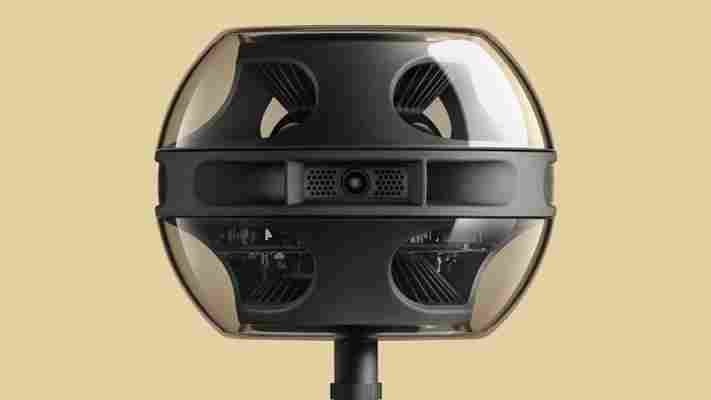Say what you will about Apple’s original HomePod, but it was actually a really solid speaker by technical standards . So when Apple discontinued it , we wondered what might eventually replace it.

Although there are currently rumors of a HomePod with a screen and camera, it’s now looking like one of the best alternatives may actually come from an ex-Apple designer and his new company, Syng . Well, it’s more of an ‘upgrade’ than an alternative, considering it costs $1,799.
Christopher Stringer , who worked at Apple for 21 years and was Jony Ive’s first hire, and Damon Way of DC Shoes and Incase fame, teamed up to create a futuristic speaker called the Cell Alpha .
It somewhat resembles the HomePod in that it features a round body with an omnidirectional acoustical design, which theoretically means the speaker will sound the same no matter what angle you listen to it from. There are a pair of force-canceling woofers on the top and bottom, and three tweeters with wide waveguides arranged around the speaker’s circumference.
But more than that, it uses something the company calls ‘triphonic’ audio to offer users “full control” of sounds with “precise placement and localization.” According to Syng:
Syng’s speaker is using beamforming — a technique that essentially allows you to ‘aim’ soundwaves — to be able to adjust the spatial qualities of the resultant sound field.
The company claims that just one speaker is able to create a realistic, room-filling stereo sound and that a pair of speakers can work without needing to arrange the speakers in a traditional equilateral-ish triangle.
Three speakers are the “fullest expression” of the system, able to create what Syng says is a completely immersive sound field. You can then use Syng’s app to change the location and size of the sound field.
That sounds cool, but it’s worth taking any claims about spatial audio with a grain of salt. Most speakers that claim to provide fully immersive audio without a full surround setup tend to be underwhelming in my experience. The ones that do provide decent spatial effects sometimes do so at the expense of sound quality.
But the technology has improved over time, and at $1,799, I hope the Cell Alpha ends up being more than a gimmick. Current attempts have had mixed results, but beamforming does feel like the next big leap in home audio.
The Cell Alpha’s design and futuristic technology resemble something Apple might make, which is no surprise given the talent behind it. It’s what I would’ve liked to see if Apple ever decided to take the hi-fi speaker route.
Unfortunately for Apple, the original HomePod didn’t sell well, forcing Apple to discontinue it . The company is apparently still having trouble getting rid of inventory.
I can’t help but feel a big reason for that is that Apple’s walled-garden approach failed it, for once. The speaker could only stream via Apple Music if you intended to use Siri, and AirPlay support for other streaming platforms like Spotify was sometimes unreliable.
It also means that you were completely out of luck if you wanted to stream music from an Android phone or Windows device (at least without significant workarounds).
Here Syng has a welcome advantage; it supports AirPlay 2, Spotify Connect, USB audio in (via two USB-C ports), and HDMI eARC (through an upcoming adapter). It’s launching with just an iOS app, but an Android one is coming soon.
If the acoustic technology pans out, the company could be onto something. We’ll let you know what we think when we get our hands on one ourselves.

